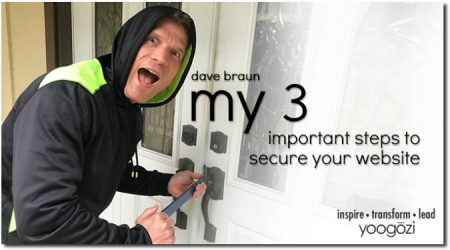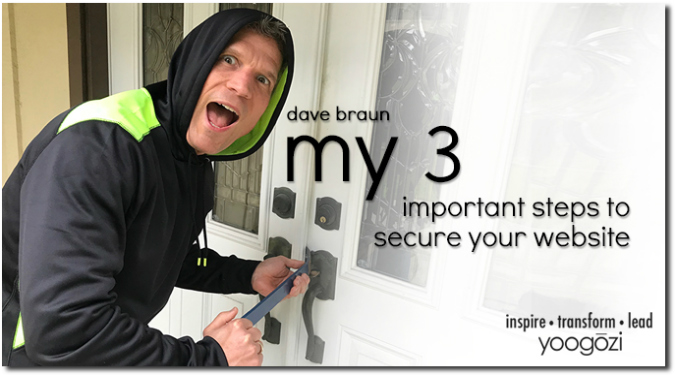Keith Baldwin: My 3 favorite tips for building strengths based teams
The world’s best managers learn how to identify and bring out the unique strengths of each team member and then focus the collective strengths of their team towards business goals.

Entrepreneurs often tell me that a strengths-based approach seems soft. It’s not. It takes an investment in time and energy to help team members see, understand and believe in their own strengths. Each time you hold a team member to a high standard and they deliver, it helps them develop confidence and hope for their future. You are building people AND a business.
The very best leaders focus on developing team member strengths, they create an engaging culture, and they develop exceptional performance objectives for the team and for individual employees.
Let’s look at how these three elements tie together:
3 tips for building strengths based teams
1. Strengths
Many of the world’s most successful organizations have used Gallup’s Clifton StrengthsFinder® to measure the talent of their workforce.
However, the very best managers take it deeper – they invest time and energy with team members to help them develop their strengths so they consistently deliver exceptional performance.
It’s worth the investment! Gallup found strength based development influences a variety of performance measures including a 12.5% increase in productivity, profit increases of 8.9%, and turnover decreases of 14.9%.
So, how do you know what your team’s strengths are? Ask them! If they’ve taken the strengths assessment, ask them how their strengths helped them create success in the past. Ask them how they currently use their strengths to achieve amazing results. Questions like “Of all the things you do, what you do best?” will help illuminate where they may be strongest.
People often don’t recognize their own strengths – some things are just easy for them. Your role is critical in helping people recognize and develop their strengths. They need to understand the value their own strengths bring to the organization.
Schedule time once a month to coach your team members on how they can productively apply their strengths.
Look for strengths in action. If you catch glimpses of excellence, point it out! Help your team understand how to purposefully use their strengths for success.
Be sure not to overlook your own strengths. You most likely don’t manage like anyone else – and that’s a good thing. Discover and develop your own strengths too. Getting assistance from a coach makes that easier.
2. Engaging Culture
How much time do you spend each week on team member development? Creating an engaged team starts with the manager being engaged and committed to employee development. Your strengths, and the strengths of your team, develop when you practice using them in very deliberate ways to increase employee engagement.
Focus your efforts on strengths-based development. Help employees learn how to spend as much time as possible working in their strengths. This is how you create an engaging culture – giving you the ability to do more with less, while surrounded by people who love what they do.
Engagement also increases when the pathway to success is clearly communicated in two-way communications. If I asked them, could your team members tell me exactly what’s expected of them each day? They have to prioritize their work just like you. Do they know what is most important and why? Would they ask you if they weren’t sure?
A key factor for increasing motivation and engagement in team members is a sense of mastery. When an employee senses they really excel at some aspect of their job, their natural motivation flourishes. How often do you catch people doing things right? Don’t wait for their performance review!
High performing managers focus on results at the same time they are developing their team. This ‘performance orientation’ provides the framework for engaging their team and bringing out their strengths.
3. Performance Oriented
Don’t just help employees see how their efforts support the vision and mission of your company. Find out what their personal goals are. Help them see how achieving goals in their current role will lead to fulfillment of their own dreams.
Great managers see the potential in each person and for the team as a whole. They relentlessly focus their energy around helping them see what’s possible. At times they want an employee’s success more than the employee!
Managers with performance orientation clarify expectations and have weekly accountability conversations with their team members about commitments from the week before. It’s not really an expectation if there is no accountability.
Similar to the strengths on a sport team, strengths on your team won’t develop in a void. Examine your teams’ engagement, set high-performance objectives for your employees, and help them aim their strengths towards success.
Keith Baldwin is a Gallup-Certified Strengths Coach who helps business leaders build strong engaged teams. Keith’s coaching programs help clients clarify their vision and objectives, then execute high-leverage strategies that lead to accomplishment of organizational objectives.
Keith works from and lives in Anchorage, Alaska with his wife Cindy. When not coaching, you’ll find him waterskiing, bike riding, and playing with grandkids amongst the beautiful scenery and wildlife. You can connect with Keith at his website (http://keithbaldwin.com) or send him an email: keith[at]keithbaldwin.com.


















